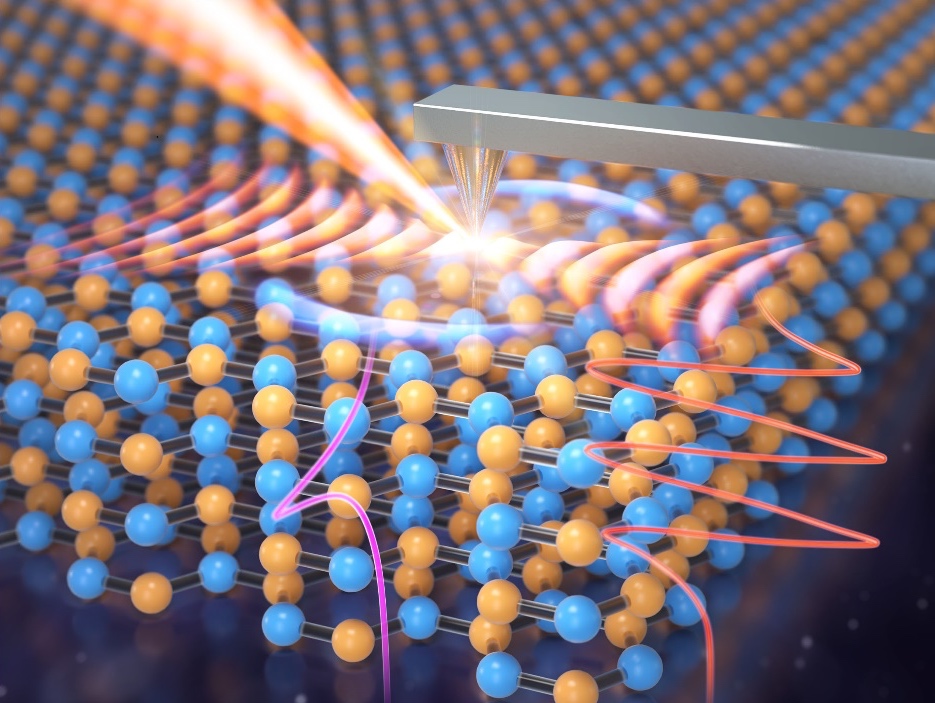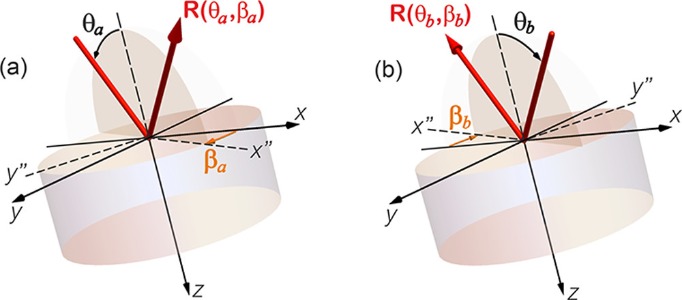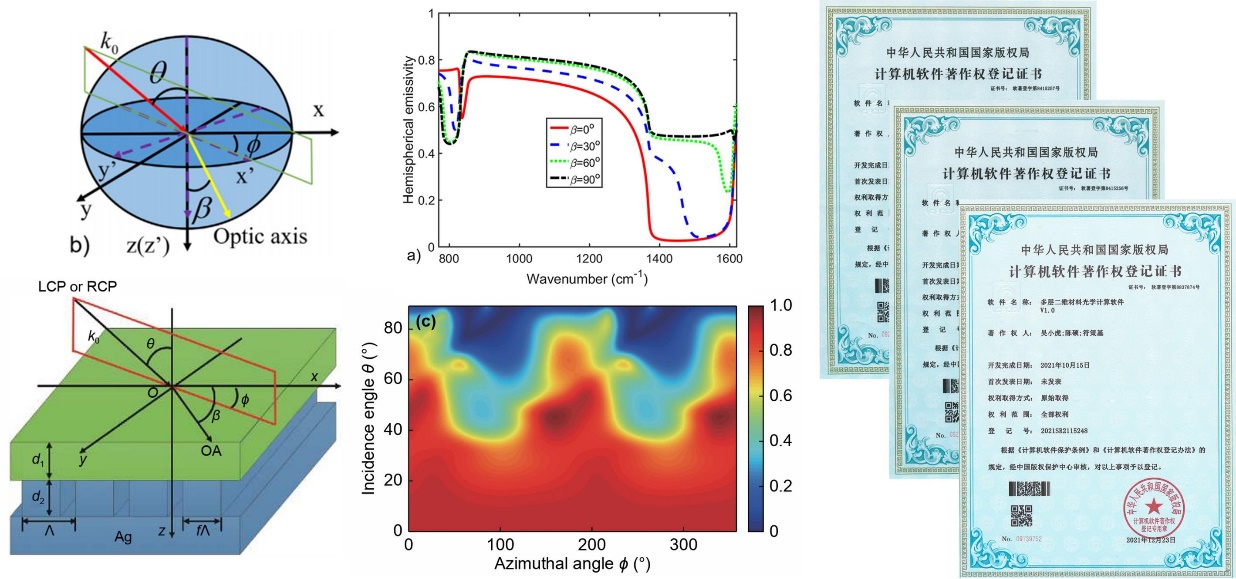Near-Field Thermal Radiation and Nonreciprocal Thermal Radiation
Release date: 2025-05-16
Visits: 313
Source: 山东高等技术研究院
Near-Field Thermal Radiation and Nonreciprocal Thermal Radiation
Thermal radiation is one of the three basic ways of energy transfer, generated by the thermal motion of particles and propagated in the form of electromagnetic waves. It occurs in all objects with temperatures above absolute zero. In many engineering fields such as spacecraft thermal management, solar power generation, aircraft target detection, infrared temperature measurement, etc., it is very important to effectively control and utilize thermal radiation.

To address these challenges, the thermal radiation team has undertaken a series of exploratory research:
(1) For low-symmetry materials, the 4×4 transfer matrix method has been improved and refined, solving the common problems of numerical overflow and singular points in the transfer matrix method. This improvement significantly enhances the stability and accuracy of the algorithm, making the solution of flat plate structures faster and more accurate.
In addition, the team has developed a rigorous coupled wave analysis method suitable for low-symmetry materials, yielding stable and accurate numerical analytical solutions. This provides an effi-cient numerical simulation approach for solving grating structures based on low-symmetry materials and promoting the independent development of numerical simulation software in this field.


(2) Through in-depth research on the dispersion curves of low-symmetry materials, the team has proposed an innovative approach utilizing hyperbolic materials with tilted optical axes to achieve asymmetric absorption and reflection, which was experimentally verified. The asymmetric absorption and enhanced absorption characteristics in low-symmetry materials were revealed, deepening the understanding of their radiative absorption and paving the way for the design and development of asymmetric devices. In addition, based on the reciprocal relationship of low-symmetry materials, an explicit expression of Kirchhoff's law was derived, proving the effectiveness of the reciprocal relationship and Kirchhoff's law. By analyzing examples of reciprocal and nonreciprocal materials, the team has clarified the conditions under which the traditional Kirchhoff’s law applies or fails in nonreciprocal systems, thereby supplementing the application scope of the traditional Kirchhoff's law and enhancing its universality.

(3) In the study of near-field thermal radiation in low-symmetry materials, the combination with plasmons significantly enhances the modulation of near-field radiation heat flux. Its application in the research of near-field thermal photovoltaics of low-symmetry materials has advanced the development of optothermal electrical coupling and efficient energy conversion technology.

The relevant research provides important theoretical support and technical reserves for the study of thermal radiation theory and its application in energy conversion technologies.

To address these challenges, the thermal radiation team has undertaken a series of exploratory research:
(1) For low-symmetry materials, the 4×4 transfer matrix method has been improved and refined, solving the common problems of numerical overflow and singular points in the transfer matrix method. This improvement significantly enhances the stability and accuracy of the algorithm, making the solution of flat plate structures faster and more accurate.
In addition, the team has developed a rigorous coupled wave analysis method suitable for low-symmetry materials, yielding stable and accurate numerical analytical solutions. This provides an effi-cient numerical simulation approach for solving grating structures based on low-symmetry materials and promoting the independent development of numerical simulation software in this field.



(3) In the study of near-field thermal radiation in low-symmetry materials, the combination with plasmons significantly enhances the modulation of near-field radiation heat flux. Its application in the research of near-field thermal photovoltaics of low-symmetry materials has advanced the development of optothermal electrical coupling and efficient energy conversion technology.

The relevant research provides important theoretical support and technical reserves for the study of thermal radiation theory and its application in energy conversion technologies.




